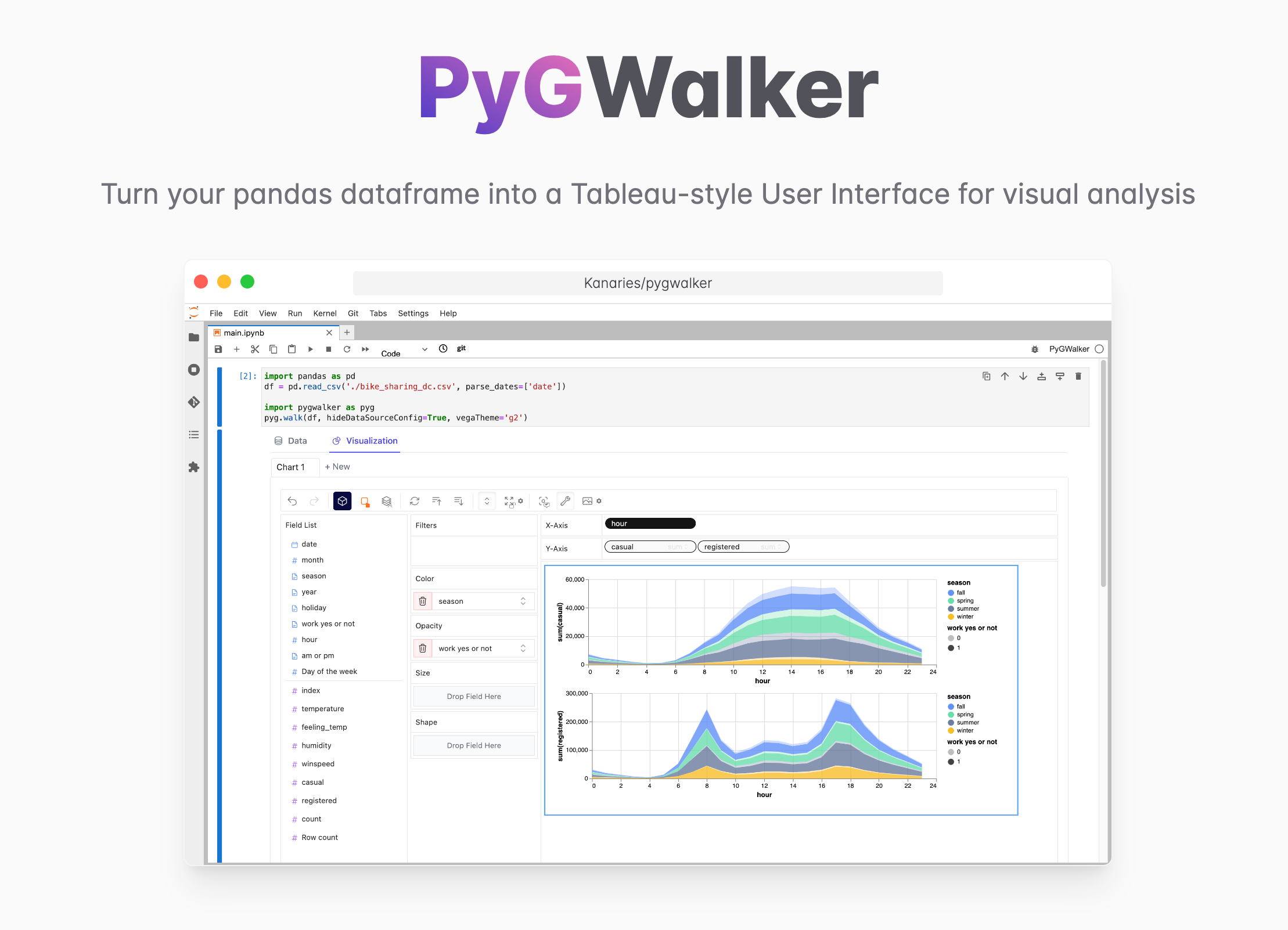Python Program To Multiply Two Numbers: Step-by-Step Guide
Updated on
Are you new to Python and looking for a way to multiply two numbers? This step-by-step guide covers everything you need to know to get started with Python multiplication, from syntax to variables, and even some helpful tricks. We'll also answer some common FAQs and point you towards related resources for further learning.
Want to quickly create Data Visualization from Python Pandas Dataframe with No code?
PyGWalker is a Python library for Exploratory Data Analysis with Visualization. PyGWalker (opens in a new tab) can simplify your Jupyter Notebook data analysis and data visualization workflow, by turning your pandas dataframe (and polars dataframe) into a tableau-alternative User Interface for visual exploration.
Syntax for Multiplication in Python
Python uses the * operator for multiplication. To multiply two numbers, simply place the operator between them. For example, to multiply 5 by 3, you would write:
result = 5 * 3
print(result) # Output: 15Multiplying Two Numbers Without Variables
If you want to multiply two numbers without using variables, you can simply include the numbers and the multiplication operator within a print statement. Here's an example:
print(5 * 3) # Output: 15Multiplying Two Numbers Provided by the User
To multiply two numbers entered by the user, you'll need to use the input() function to receive user input. This function returns a string, so you'll also need to convert the strings to integers or floats before performing the multiplication. Here's an example:
num1 = float(input("Enter the first number: "))
num2 = float(input("Enter the second number: "))
result = num1 * num2
print(f"The result of the multiplication is {result}")In this example, we use the float() function to convert the input strings to floating-point numbers, which allows for decimal values. If you only want to work with integers, replace float() with int().
Choosing the Right Data Type for Multiplication
When multiplying numbers in Python, you can use integers, floats, or a mix of both. Integers represent whole numbers, while floats represent decimal numbers. If you need more precision or are working with decimal numbers, use floats. Otherwise, integers are generally more efficient. Learn more about Python data types to make an informed decision.
String Formatting in Python
String formatting is a technique used to insert variables or expressions into strings. It makes it easy to display results or concatenate strings. In the example above, we used an f-string to format the output, which is a convenient way to include variables directly within a string:
print(f"The result of the multiplication is {result}")You can learn more about string formatting in Python to enhance your programming skills.
Python Multiplication Tricks
There are several ways to optimize multiplication in Python or perform more advanced operations. For instance, you can use the pow() function to raise a number to the power of another:
result = pow(2, 3) # 2 raised to the power of 3
print(result) # Output: 8Additionally, you can use Python libraries like NumPy to perform efficient matrix multiplications or Pandas for arithmetic operations on dataframes.
Conclusion
In this guide, we've covered the basics of multiplying two numbers in Python, from syntax to user input, data types, and string formatting. We also touched on some Python multiplication tricks and optimization techniques. As you become more comfortable with Python, you'll find that there are many ways to approach multiplication, depending on your specific needs and goals.
For those interested in further learning, consider checking out our Python tutorials, which cover a wide range of topics, from beginner to advanced. You may also find it helpful to explore resources on Python libraries like NumPy and Pandas to perform more complex operations and work with large datasets.
